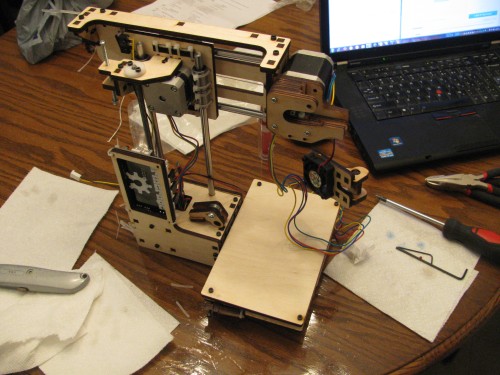I’ve actually been quite active tinkering with things, even keeping notes on what I’ve done with the intention to post here — but I’ve not been getting around to posting anything.
My twitter followers will know I’ve recently got myself a 3D printer and that along with the rest of life has been keeping me busy. This is the first in a multi-part series of posts about my recent adventure.
In October, one of my birthday presents was “go buy yourself a 3d printer”. Super cool! I’ve been drooling over them for a while. First following the Solidoodle, then the Printrbot Simple, MakiBox, and even this $100 3d printer on KickStarter.
Of course with me, there is a big difference between wanting to buy something and actually putting down the money to buy it. Agonizing over a purchase is probably half the fun. You’ll note that all of the choices were fairly economical, this is a toy for me – not a serious tool.
In the end the Printrbot Simple won out. Some were eliminated on price or availability, but the Simple also came in a kit form – and for me building the printer is half the fun.
I ordered it on October 22nd. The order was fulfilled on October 29th and delivered (inside the USA) on November 5th. While I live in Canada, the border is only about an hour away, and sometimes it makes sense to avoid (excessive) cross border shipping fees and simply use a parcel holding service – in this case I used The Corporate Center. When bringing the kit across the border I did pay some taxes on it (about $40) but given that I didn’t pay any tax on the purchase because it came “from out of state” it didn’t feel like a big deal. The shipping cost to Canada was more than I saved, plus there was an ‘unknown’ cost to do the duty/taxes.
The box itself was surprisingly compact: 4.5″x10.5″x10.5″ – weighing in under 8lbs.

Next up, we’ll start assembling the kit.



